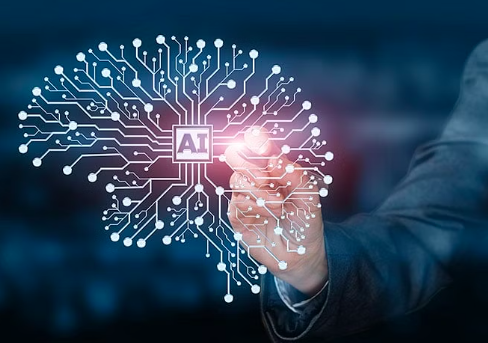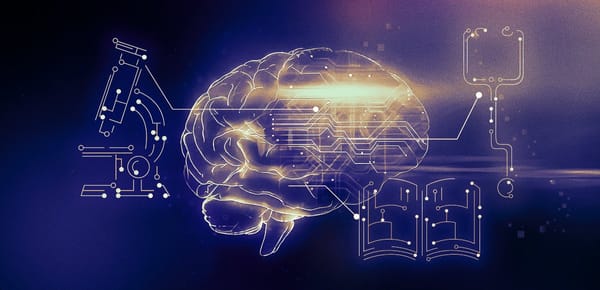AI: Is it safe or worse for humankind?
Artificial Intelligence (AI) is an umbrella term used to describe technologies that are designed to mimic human intelligence, such as machine learning, natural language processing, and computer vision. AI has been the subject of much debate in recent years

Artificial Intelligence (AI) is an umbrella term used to describe technologies that are designed to mimic human intelligence, such as machine learning, natural language processing, and computer vision. AI has been the subject of much debate in recent years, with some people fearing that it could pose a significant threat to humanity, while others believe that it has the potential to be a transformative technology that could solve some of the world's most pressing problems. In this article, we will explore both sides of the argument and try to answer the question: Is AI dangerous or not?
On one hand, proponents of AI argue that the technology has the potential to solve some of the world's most complex problems, from climate change to disease prevention. For example, AI could be used to analyze large datasets to identify patterns and insights that humans might miss or to develop personalized medicine based on an individual's genetic makeup. Furthermore, AI has the potential to automate many of the repetitive and mundane tasks that humans currently perform, freeing up time for more creative and fulfilling pursuits.

On the other hand, there are many concerns about the potential dangers of AI. One of the main fears is that AI could become so advanced that it becomes uncontrollable, leading to a scenario known as the "singularity," in which machines become more intelligent than humans and start to make decisions that are not in our best interests. Another concern is that AI could be used to create autonomous weapons that could cause mass destruction without human intervention. Finally, there are worries that AI could exacerbate existing inequalities in society, leading to job losses and a concentration of wealth in the hands of a small elite.
Is AI Dangerous or Not?

Artificial Intelligence (AI) is a rapidly advancing technology that has the potential to revolutionize various industries. From healthcare to finance, AI is being used to make complex tasks more efficient and accurate. However, as AI continues to grow in sophistication, concerns have been raised about the potential dangers it poses to humanity. In this article, we will explore both the advantages and risks of AI and try to answer the question: Is AI dangerous or not?
Advantages of AI
One of the primary benefits of AI is its ability to analyze large amounts of data quickly and accurately. In fields such as healthcare, AI can be used to identify patterns in patient data that may be difficult for humans to spot. This can lead to faster and more accurate diagnoses, ultimately leading to better patient outcomes. AI can also be used to analyze large datasets in areas such as climate change, allowing researchers to identify trends and develop more effective solutions.

Another advantage of AI is its ability to automate repetitive tasks. In industries such as manufacturing, AI can be used to perform tasks such as quality control and inventory management. This can free up human workers to focus on more complex tasks that require creativity and problem-solving skills. In addition, AI can be used to develop autonomous vehicles that can reduce accidents caused by human error, making roads safer for everyone.
AI also has the potential to improve customer experiences. With AI-powered chatbots, companies can provide 24/7 customer support, improving customer satisfaction while reducing the workload for human customer service representatives. In addition, AI can be used to personalize product recommendations based on a customer's preferences and past behavior, leading to increased sales and customer loyalty.
Risks of AI

Despite the numerous advantages of AI, there are also significant risks associated with its development. One of the primary concerns is the possibility of an AI singularity, in which machines become more intelligent than humans and start to make decisions that are not in our best interests. While this scenario is still considered science fiction by many, there is no doubt that AI is advancing rapidly, and it is difficult to predict what the future will hold.
Another risk of AI is the potential for job displacement. As AI becomes more sophisticated, it will be able to perform tasks that were previously done by humans. This could lead to significant job losses in industries such as manufacturing and transportation. While some experts argue that AI will create new job opportunities in fields such as data analysis and programming, it is unclear whether these new jobs will be enough to offset the losses in other industries.
There are also concerns about the potential for bias in AI algorithms. AI algorithms are only as good as the data they are trained on, and if that data is biased, the algorithm will be biased as well. This could lead to discrimination in areas such as hiring and lending, perpetuating existing inequalities in society.

Finally, there is the risk of AI being used for malicious purposes. For example, autonomous weapons could be developed that could cause mass destruction without human intervention. In addition, AI-powered cyber attacks could be used to steal sensitive data or disrupt critical infrastructure.
Mitigating the Risks of AI
While the risks of AI are significant, there are steps that can be taken to mitigate them. One approach is to ensure that AI is developed in a responsible and ethical manner. This could involve establishing regulations that govern the development and use of AI, as well as ensuring that AI algorithms are transparent and accountable.

Another approach is to focus on developing AI in areas that will benefit humanity. For example, AI could be used to develop new treatments for diseases or to improve the efficiency of renewable energy sources. By focusing on these areas, we can ensure that AI is used for the greater good, rather than for malicious purposes.
Finally, it is important to invest in research and development of AI safety measures. This could involve developing algorithms that are designed to detect and mitigate bias, or developing fail-safe mechanisms that prevent AI systems from causing harm. Additionally, it is important to invest in education and training programs that will help people understand the risks and benefits of AI and to ensure that they are equipped with the skills needed to work alongside AI systems.

In conclusion, AI is a powerful technology that has the potential to transform many industries. While there are significant risks associated with its development, there are also steps that can be taken to mitigate these risks. By focusing on developing AI in a responsible and ethical manner, investing in AI safety measures, and educating people about the risks and benefits of AI, we can ensure that AI is used to improve our lives, rather than to cause harm. Ultimately, the question of whether AI is dangerous or not depends on how we choose to develop and use this powerful technology.




